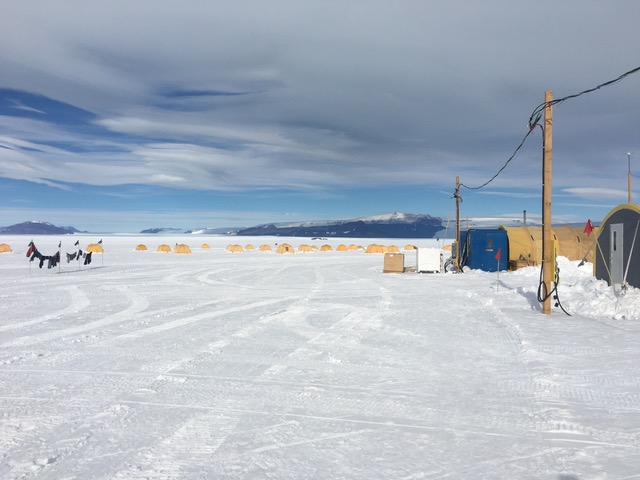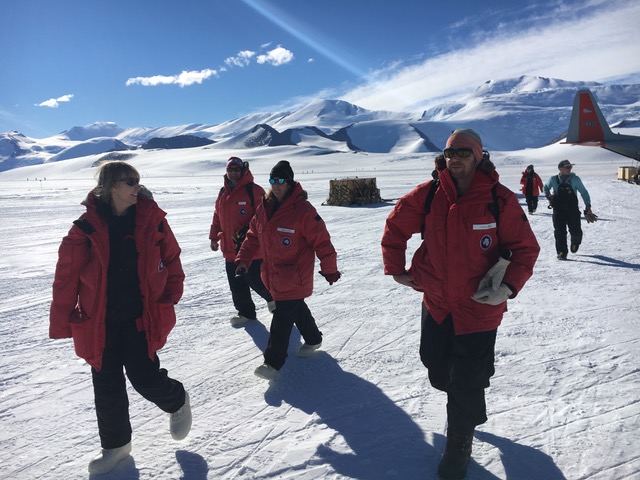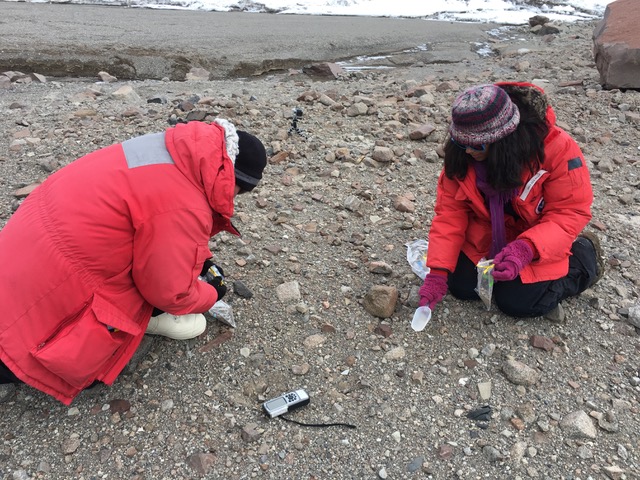Exploring the boundaries of soil life and assemblage of biotic communities
Funding
National Science Foundation, Office of Polar Programs: OPP 1341648
Principal Investigators
Diana Wall, Byron Adams, Ian Hogg, W. Berry Lyons, and Noah Fierer
Timeline
September 2016 — August 2021
Climate, species interactions, habitat suitability and dispersal drive the origin, maintenance, structure and functioning of ecological communities, but less understood is the relative importance of these drivers in shaping how terrestrial ecosystems respond to climate-driven environmental changes. Ostensibly, the massive environmental changes associated with glacial recession had the greatest influence on the structure and functioning of ecological communities in the Transantarctic Mountain region of Antarctica, yet we currently have few clues as to how biotic communities responded to these changes. The overarching objective of this project is to comprehensively characterize the functional, taxonomic, biotic and abiotic drivers of soil ecosystems in the context of their response to deglaciation since the last glacial maximum in the Shackleton Glacier region. This is a collaborative project with biologist and geochemist colleagues at Brigham Young University, University of Colorado, and Ohio State University. Our role is to dentify the taxonomic diversity and the functional genetic composition within a broad suite of soil biota and examine their patterns of assembly and distribution within the framework of their geological legacies.
Could high elevation soil ecosystems have served as refugia for soil biota through the Pleistocene? How have Antarctica’s terrestrial biota responded to climate-driven changes since the LGM? As the outlet glaciers of the TAM receded, how were contemporary terrestrial ecosystems restructured? What biotic and abiotic drivers were responsible for observed differences in contemporary biodiversity, ecosystem structure, and functioning?From late December 2017- early January 2018 we conducted a field campaign to test hypotheses associated with each of these questions. We collected soil and rock samples along elevational transects above and below the LGM trim line (where possible) at each of our proposed sites. Preliminary analyses of some of the first data to emerge from these samples show patterns of ecological communities structured along latitudinal and elevational gradients, strongly overprinted by geological legacies of glaciation and surface exposure.
Publications
Diaz, M A; Corbett, L B; Bierman, P R; Adams, B J; Wall, D H; Hogg, I D; Fierer, N; Lyons, W B. Relative terrestrial exposure ages inferred from meteoric 10Be and NO3- concentrations in soils along the Shackleton Glacier, Antarctica. Earth Surf. Dyn. Discuss. 2020, 1–35 (2020).
Dragone, Nicholas B; Diaz, Melisa A; Hogg, Ian; Lyons, W Berry; Jackson, W Andrew; Wall, Diana H; Adams, Byron J; Fierer, Noah. Exploring the boundaries of microbial habitability in soil. bioRxiv 2020.08.03.234583 (2020). doi:10.1101/2020.08.03.234583
Diaz, Melisa A.; Welch, Susan A.; Sheets, Julie M.; Welch, Kathleen A.; Khan, Alia L.; Adams, Byron J.; McKnight, Diane M.; Cary, S. Craig; Lyons, W. Berry. Geochemistry of aeolian material from the McMurdo Dry Valleys, Antarctica: Insights into Southern Hemisphere dust sources. Earth Planet. Sci. Lett. 547, 116460 (2020).
MA Diaz, J Li, G Michalski, TH Darrah, BJ Adams, DH Wall, I D Hogg, N Fierer, S A Welch, CB Gardner, WB Lyons. 2020. Stable isotopes of nitrate, sulfate, and carbonate in soils from the Transantarctic Mountains, Antarctica: A record of atmospheric deposition and chemical weathering. Frontiers in Earth Science, section Geochemistry.


